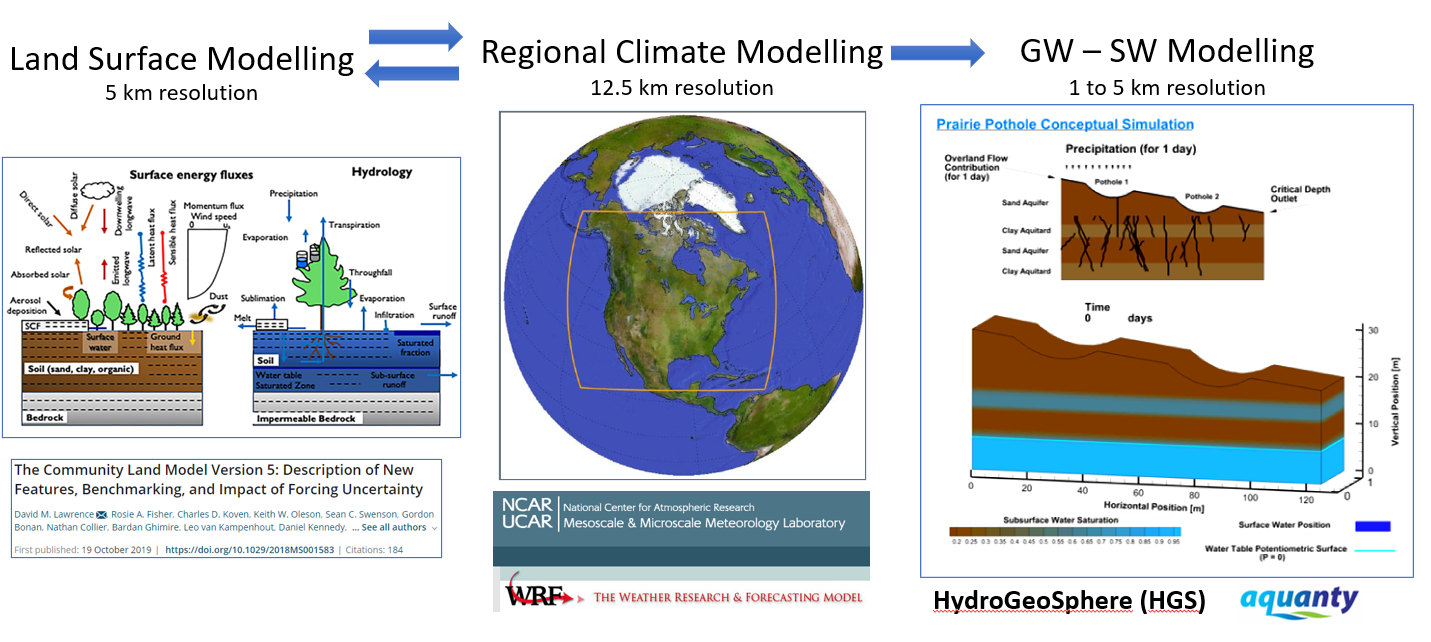WaterCanada - Water resources to become less predictable with climate change
The Canada1Water Land <> Climate <> Hydrology Modelling Framework
A study by the National Center for Atmospheric Research (NCAR) indicates that future streamflow will become more variable and unpredictable, even in regions where precipitation is not forecasted to change significantly due to climate change. This variability will be driven by periodic precipitation events interacting with receding snowpack, melting earlier in the season. The authors of the study used the the Community Earth System Model, version 2 to investigate how reduced snowpack will affect the variability of water resources.
Canada1Water will also account for variations in snowpack to inform the long-term hydrologic forecasting objectives of the project. C1W will use regionally downscaled climate forecasts (produced by the Weather Research and Forecasting Model) to power snowpack forecasts using the Community Land Model version 5. The resulting estimates of snowpack depth will be applied (along with other climatological/land use variables) as boundary conditions in the continental scale HydroGeoSphere models.
Click here to read the article at WaterCanada.net
“Many regions of Earth rely on the accumulation of snow during the winter and subsequent melting in the spring and summer for regulating runoff and streamflow. For years, however, scientists have warned that the snowpack will become thinner and melt earlier as more precipitation during the colder months falls as rain instead of snow, and as melting occurs at times during the winter instead of the spring runoff season.
“Snow-related metrics are critical for informing society’s management of precious water resources,” said Keith Musselman, a hydrologist at the University of Colorado Boulder and co-author of the study. “As utilities and civil works agencies plan new reservoirs and other infrastructure to adapt to a changing climate, we must address basic research questions about the changing characteristics of winter snowpack and resulting streamflow that we have long relied upon.”


